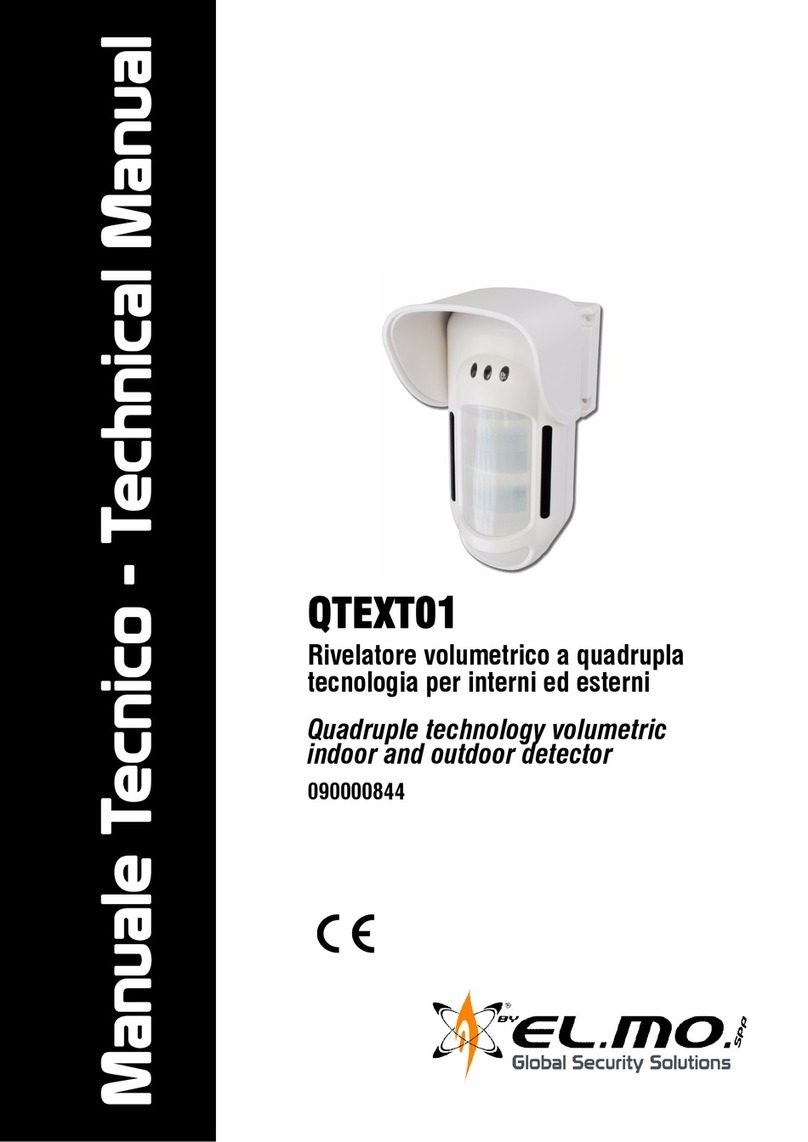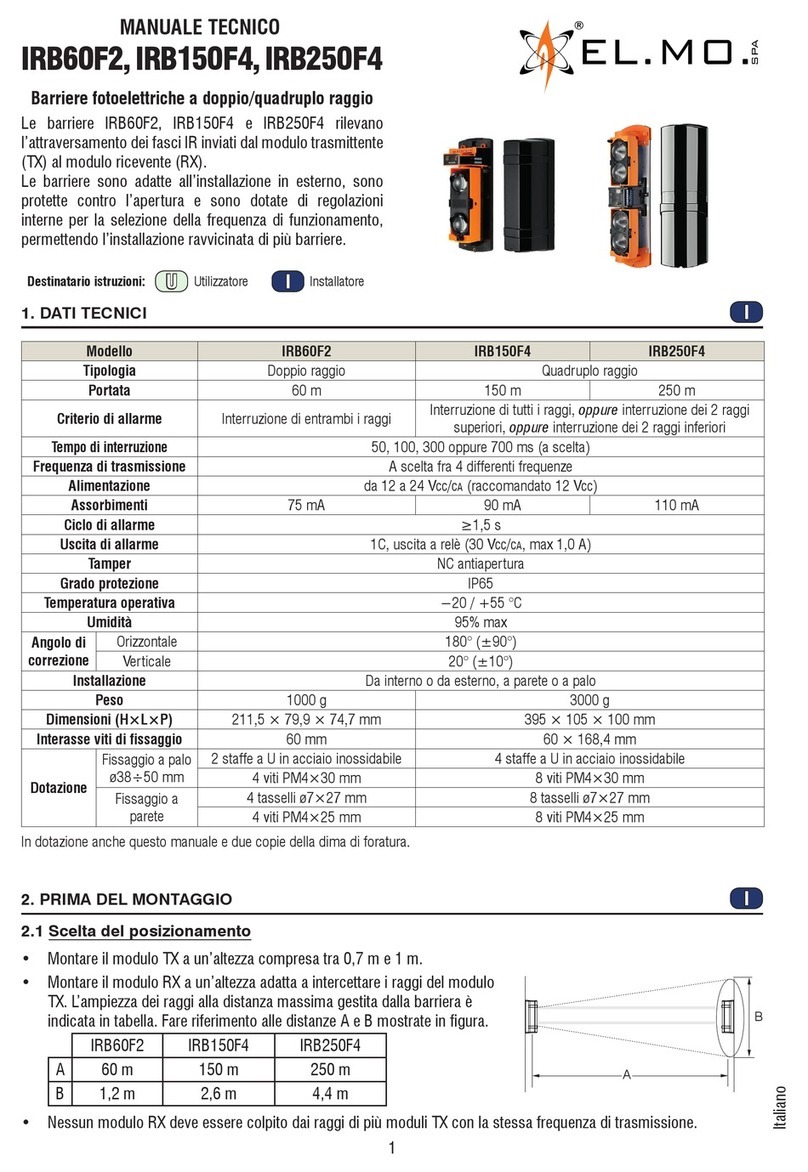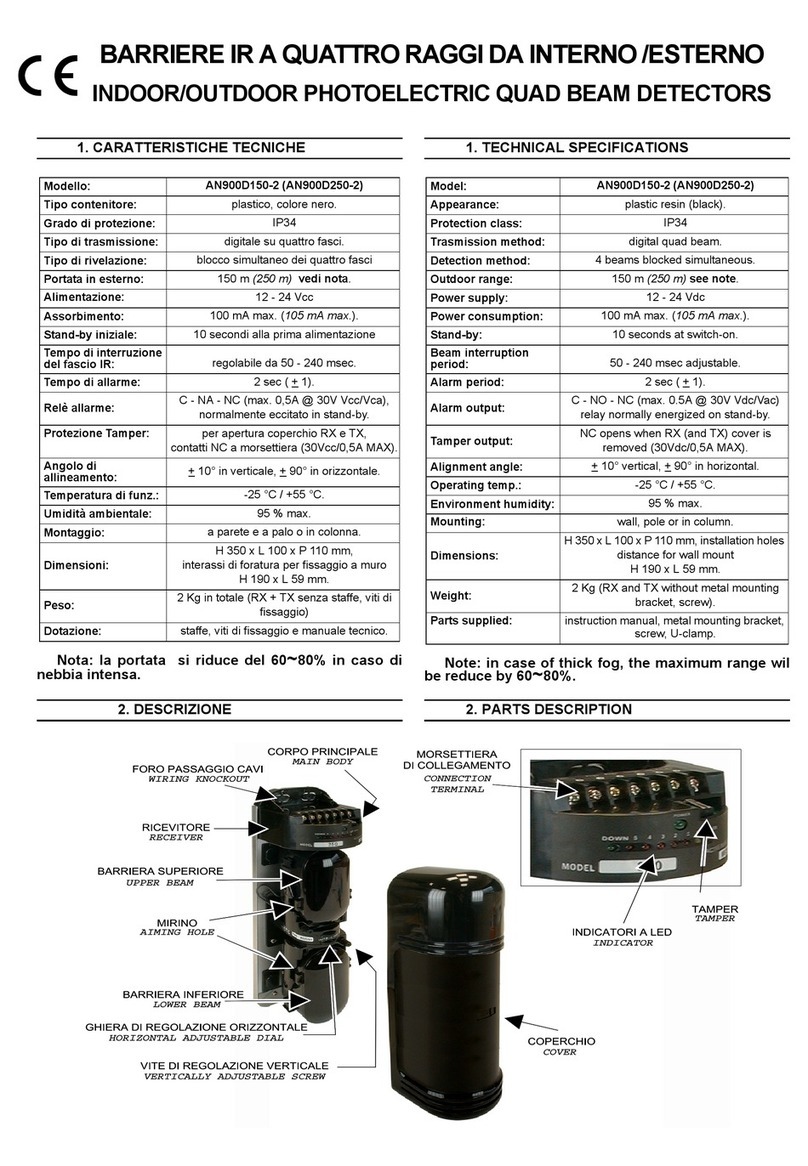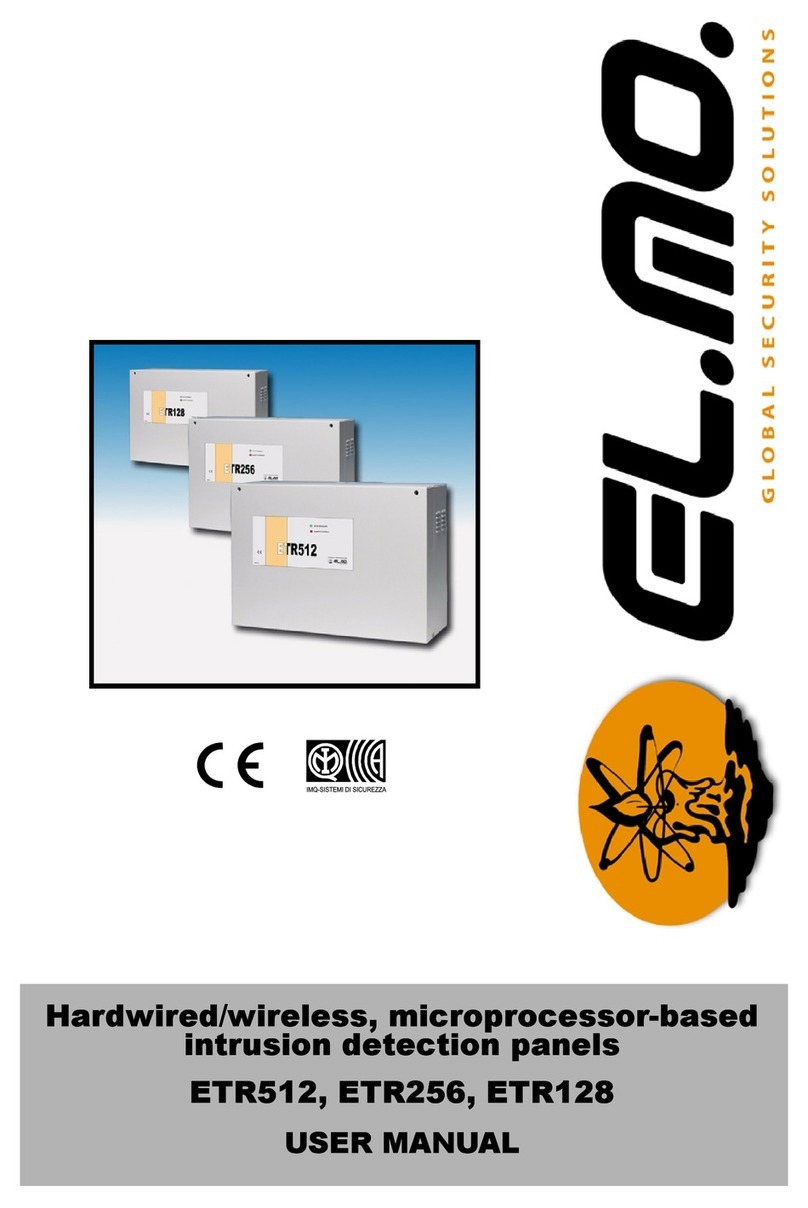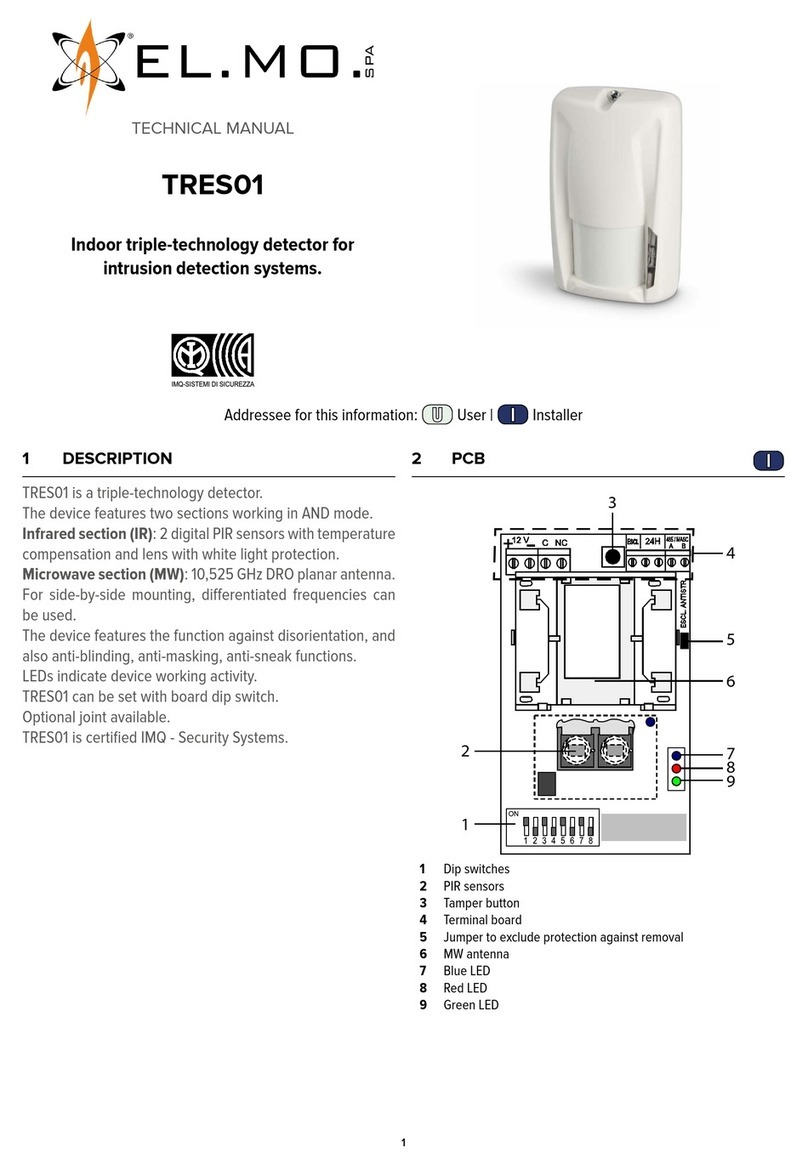
4
090020839 - BLADERF -TECHNICAL MANUAL
info@elmospa.com
elmospa.com
2.1 Features
The BladeRf detector complies with EN50131-5-3 + A1 at level 1and level 2 for the environmental class.
The Blade detector has passed tests conducted in accordance with the directive EMC 2004-108-EC with tests
carried out in accordance with EN 50131-2-2 level 1 for IR section, EN 50130-4 + A1+ A2 regarding immunity
Model: BLADERF
Performance level: I level CEI 79-2, level B CEI 79-16, EN50131-5-3 grade 1, EN50131-2-2 grade 1.
Power supply: 3,6V from battery ½ AA 3,6V to Lithium (supplied).
Discharge battery detection: if less than 2.8V (3.2V idle state)
Minimum operating voltage: 2.7V for LEDs, 2.4V RF section
Power consumption detector @3.6V
Stabilization power: 120 A
At rest: 28 A
IR alarm, open magnetic
contact and roll-up shutter
sensor: 16 mA
Functions selection: dipswitch on board, see wiring diagram.
TX frequence: digital broadcasts on frequencies for LPD devices (Low Power Devices).
TX protocol: Selectable with selector for compatibility with Helios or Villeggio system.
Connection range: 120 meters in open space subject to limitations dependent on environmental conditions.
Average life: 2 years with HELIOS Protocol, 2.5 years with Villeggio Protocol.
Note: the calculation considers 20 total transmissions per day and a supervision
transmission every 26 min.
Operations timings
First power on: 10s disabling the IR section, the other input are active.
Walk-test time: Activated at the first power on with a duration of 5 min or reset from the first movement of
the magnetic contact or the roll-shutter.
Wait time between first IR pulse
and second IR pulse: 10s only with minimum sensitivity.
IR inhibition time in Walk-Test
after alarm transmission: 3 s.
Alarm from roll-up shutter input: 5 impulses in 15 s.
Supervision time: Transmission every 26 min.
IR
Lens type: Vertical curtain lens.
Sensitive zones: 2 beams.
Coverage area: see installation diagrams.
Range: Max. 4 mt, see installation diagrams.
PIR sensor: Digital immune to RF interference. Silica filter against gazzle (provided).
IR gain stage: Optimized with the temperature.
Views: blue LED visible through the lens.
Operating states displayed: fixed lighting for state as before power;
triple flashes for transmission during the Walk-Test,
single flash for IR pulse during the Walk-Test,
single flash for RF transmission in operation.
Connections: terminal for connection of the magnetic contact, shutter sensor, tamper input.
Protection: protection against the opening of the case.
Operating temperature: -10 / +55 °C.
Humidity: 93% U.r.
Dimensions: H 96 - W 35 - D 33,5 mm (vertical position).
Wheelbase drilling: 65 mm.
Weight: 65 g.
Parts supply: screws, dowels, technical manual, battery 3.6 V, with bag labels for capacity reduction.







